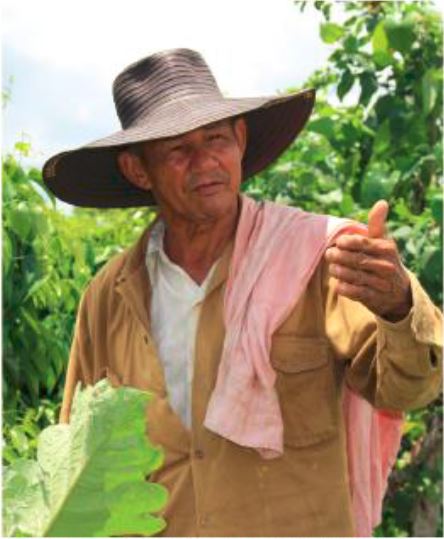
During one of the country’s most violent periods, the Revolutionary Armed Forces of Colombia (Farc) and the paramilitary forces roamed northern Colombia sending thousands of farmers fleeing their homes, refugees in their own country. Often, the groups terrorized villages in the interest of acquiring their lands, cattle, or any other valuable asset.
In the strategically located region Montes de Maria, armed groups destroyed entire irrigation systems and stole kilometers of pipelines installed by the government to support agriculture and rural development. They also stole or destroyed the pumps that fed the system from large water basins. In many cases, the water systems were rendered inoperable shortly after farmers had begun to utilize them. Fear and destruction dissuaded many farmers from returning to their lands.
Before the violence, 27 irrigation, districts were distributed across 15 municipalities in the region. Each district provided water to 40 hectares of land, benefiting hundreds of small landowners. Back then, Montes de Maria was known for food production Yam, plantain, corn, avocado, cacao, eggplant, and sesame harvested in the region reached markets in cities such a Barranquilla, Bucaramanga, nad Bogota. Other farmers specialized in tobacco, a profitable commodity with various market channels.
In the aftermath of the violence, more than 90% of the farmers in this area depend on rain for growing their products; food production dipped to levels of subsistence.
The story of Jamie Narvaez Marquez, whose father was murdered by the Farc, is like hundreds of farmers in Montes de Maria who were victims and witness to violent atrocities.
In 1998, Marquez was displaced from his hometown San Rafael in the municipality of Ovejas. He returned in 2004 to recover his land, the irrigation systems, and the time lost due to violence. He started from scratch after finding his former plots abandoned and overgrown. the lack of water, climate change, and unreliable rains forced Marquez and farmers like him to adjust to the conditions, plant a smaller area and conform to crops suited for rain-fed agriculture.
“Unable to irrigate, during the dry seasons we couldn’t count on the yam and manioc crops. The dry season killed them, left us without seeds, and made us lose our crops,” says Jaime.
More Drops, More Crops
In 2013, as the people of Montes de Maria began to breathe the airs of post-conflict, the USAID Land and Rural Development Program (LRDP) began supporting the National Institute of Rural Development (Incoder) and the regional government to rehabilitate five irrigation systems including El Flechal and San Rafael, both in Ovejas.
For three years, Incoder had studied how to improve and optimize the irrigation systems, and even studied the possibility of building them all over again. But it wasn’t until 2015 when LRDP assisted the government in conceptualizing and drafting the designs and proposals for the rehabilitation projects, that the finding from the national government was secured and the project underway.
“USAID’s help was key to do this work in a rapid and efficient manner. At the moment, farmers have a finished project, and they participated hand in hand with engineers to work on its design in order for it to be adjusted to reality, that is, for districts to work according to the crops they are planting,” said Hector Blanco Barraza, Incoder officer who led the district rehabilitation project.
Regional governments in Montes de Maria are investing approximately US$540,000 to rehabilitate the El Flechal and San Rafael irrigation systems and three more irrigation districts. LRDP works with government partners in three departments to support the design and implementation of a total of 10 irrigation projects that together will bring reliable irrigation to approximately 450 hectares of farmland and benefit over 150 families.
At San Rafael, Marquez and 27 other farmers are no longer waiting for the rain. Using the reservoir pump sprinkler system, they are now irrigating yucca, yam, eggplant, and tobacco crops for the first time in nearly two decades.
Reliable irrigation also allows the farmer to employ advanced agriculture practices, such as trellising and crop rotation, resulting in healthier soils, higher productivity, and increased sustainability. Authorities in Monets de Maria are now looking at how to expand irrigation to other districts. In 2017, 10 new irrigation districts have already been identified and prioritized for rehabilitation.
By applying multiple capacities strengthening endeavors targeting local and national government entities, the USAID Land and Rural Development has helped department governors, agriculture offices and municipal leaders in five former conflict regions of Colombia mobilize more than US$15 million to fund agriculture and infrastructure projects for rural farmers and victims of the conflict.

